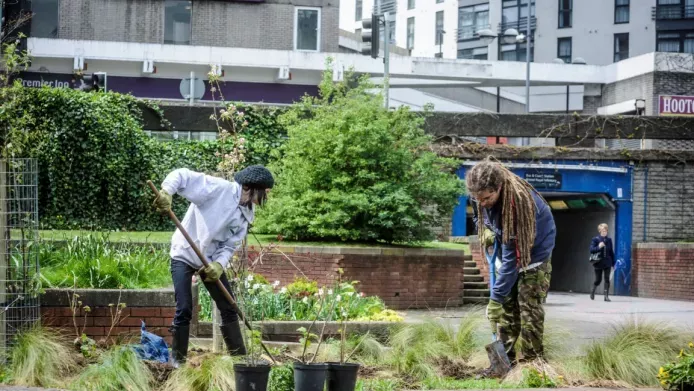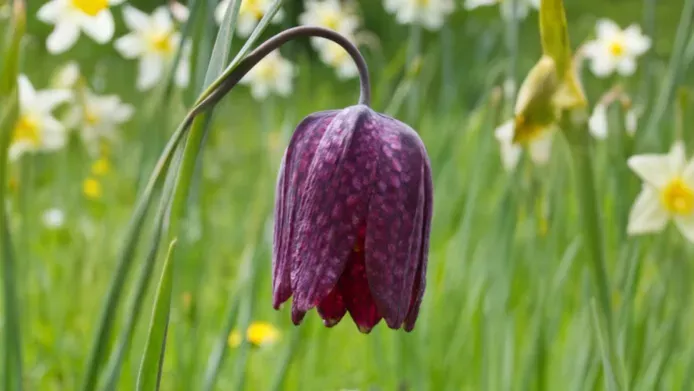Grass lawns outside of our homes are often methodically manicured rectangles, curated and laboriously controlled by humans, but has it always been this way and what impact does this have on wildlife in the UK?
Why is the perfect lawn so artificial?
Grass lawns in the UK can be traced back to the Middle Ages, when they were first used as grazing areas for livestock.
In the 17th century lawns began to be seen as a desirable feature of gardens, a trend that continued to grow in popularity following the invention of the mechanical lawnmower in the 19th century.
Growing and maintaining fashionable lawns required significant labour, which quickly lead lawns to become a symbol of wealth and status.

Although grass lawns in the UK no longer hold their social prestige of the past, they are still a part of the home that many take great pride in. The desire to have perfectly trimmed, green and uniform grass, combined with the belief that grass is inherently high maintenance, has led to a booming global market in artificial turf.
A report by Arizton valued the global market for artificial grass at 6.47 billion pounds in 2021, expecting a rise to 10.14 billion pounds by 2027. Despite negative impacts to the environment and pockets, the United Kingdom is the largest market for artificial turf in Europe.
What is No Mow May?
No Mow May encourages people not to mow their lawns, use pesticides or fertilisers during the month of May. The aim of the campaign, launched in 2019 by Plantlife, is to help pollinators by providing them with a food source.
How to take part
Simply don't mow your lawn during May. If there are areas of lawn that you must trim, try reducing the size of the area you mow or the frequency.
You can also help pollinators by planting wildflowers in your outdoor spaces. Although the peak time for wildflower blooms in the UK is often in the spring and summer, they supply food to pollinators throughout the year.
Register your participation in No Mow May to help Plantlife record how many green spaces will be left alone for nature.
The benefits of not mowing your lawn
Participating in No Mow May is the best first step to creating a healthy lawn habitat, which can provide benefits such as:
- Reduced mowing encourages more species of wildflowers and grasses to bloom in your lawn, creating more pollen to feed vital pollinators who support the growth of more plants by pollinating.
-
This creates a supportive habitat for pollinators such as bees, wasps, butterflies, moths, beetles and flies.
-
Many species rely on longer grasses for habitats or nesting sites such as furrow bees and mining bees.
-
Increased numbers of pollinators also provide food for birds and other wildlife, helping to make your space more biodiverse.
- Less mowing means less fuel. The reduction in fuel usage over May can reduce pollution.
- Your soil could become more aerated and healthier, increasing its capacity to store carbon from the air.
- Rethinking what makes a perfect lawn alters the workload required to maintain it, allowing more people to take pride of their gardens and see their beauty
-
Long grass retains more moisture in the soil than short grasses, reducing the amount of watering needed from people
-
Moister conditions in turn benefit insect larvae and caterpillars as well as reducing air and surface temperatures on hot days
-
The reduction in use of pesticides or fertilisers, which can harm pollinators, also supports the growth of diverse wildflowers
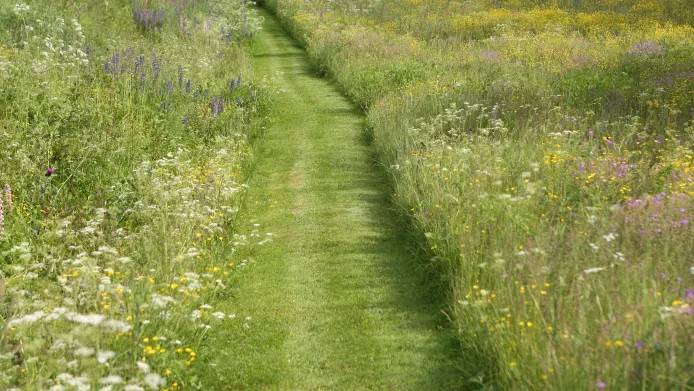
When to mow your lawn
No Mow May asks that you leave your lawn alone for a month, but this doesn’t mean you can never mow again. The best way to encourage biodiverse ecosystems in your garden is variety, for example different grass lengths provide diverse habitats throughout the year.
For areas of short lawn try to trim them no more than once per month. Plants like daisy, white clover and bird's-foot trefoil are adapted to growing in short grass. Once they’ve established themselves (around May time), they produce flowers every few weeks, mowing can even increase flower production overall.
For wildflower meadows with longer plants and grasses, only cut the area once a year in the autumn for the best blooms. If you wish to leave some areas of long grass uncut all year, they will create great nesting sites year-round for wildlife.
Growing native wildflowers
If you want to go a step further to create a wildlife friendly lawn, you can sow wildflower seeds or plant plug plants during spring and autumn. Make sure to check that your seeds or plug plants are UK native and sourced in the UK to support local wildlife.
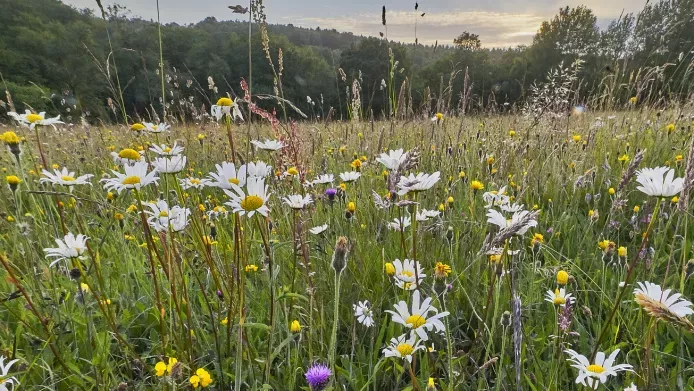
If you’re unable to grow long grass, here are common UK plants that can make shorter lawns wilder:
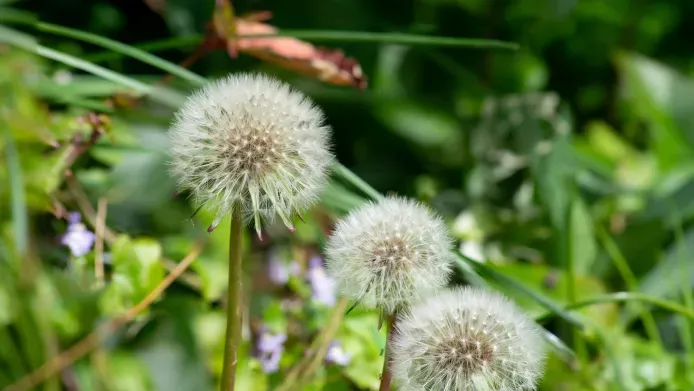
Sometimes considered a weed, dandelions are an important early food source for pollinators and provide seed for birds.

This member of the pea family feeds a huge number of different insects, including the caterpillars of rare butterfly species like the silver-studded blue.

This can pop up in lawns fairly easily, and we recommend that you let it if you want to encourage bumblebees to visit.
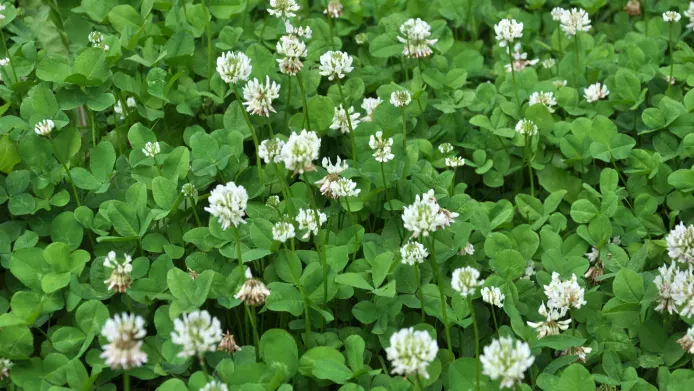
White Clover produces lots of nectar and is a favourite of the common blue butterfly.
If you spot this in your garden, look out for a four-leaf clover to bring you good luck!
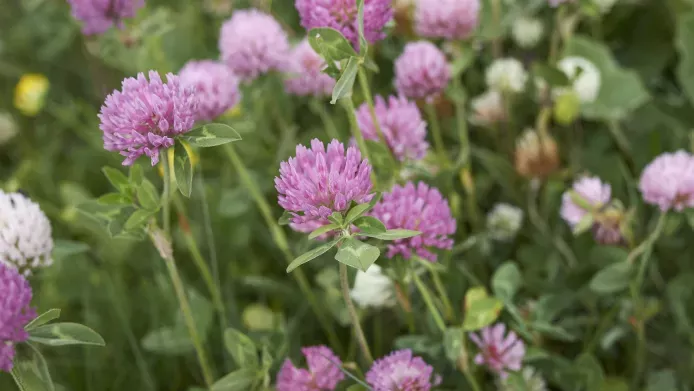
Red clover has a great ability to fix nitrogen, which helps to enrich soils, so is often used as in crop rotations. This plant is a favourite for wood mice and bees!

We’d be surprised if you don’t see at least a daisy or two show up on your lawn this spring! Perhaps our best-known flower, this plant is sometimes thought of as a weed, but the flowers offer a small but important nectar source for insects including solitary bees, flies and beetles.
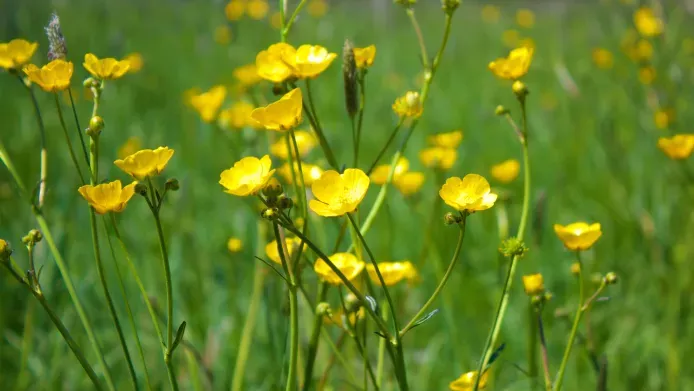
Buttercups don’t just tell you if you like butter… they are a fantastic plant for hoverflies and provide seed for birds.


There are two type of dead nettle, red (Lamium purpureum) and white (Lamium album). You’ll be pleased to know that neither of them sting, but they do flower for long periods right into the autumn, so are a valuable source of food for wildlife.

There are two native violet species that look the same: sweet violets (Viola odorata) and common dog-violet (Viola riviniana). Both have small, delicate flowers and grow most commonly on woodland floors. The main difference is that common dog-violet has no scent, whereas sweet violets smell... you guessed it, sweet! Both are important sources of nectar for woodland butterflies.
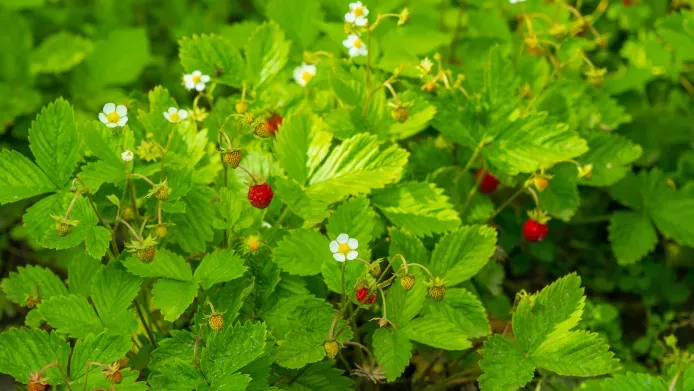
This plant produces miniature versions of commercially produced strawberries, which are delicious to slugs, mice and many others as well as humans.
Wild strawberries were once widespread but are now harder to find – read more about the species on the RBG Kew website.
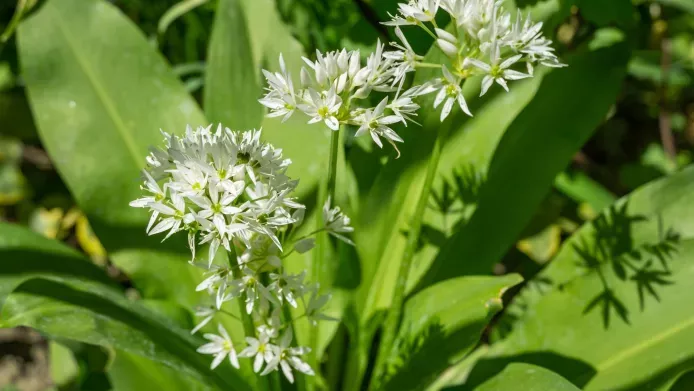
Wild garlic is an ancient-woodland-indicator plant, meaning if you come across it in the wild then it is possible you’re in an ancient woodland.
It is a popular edible plant often foraged for eating in salads, pesto, or soups – you’d be lucky if it shows up in your garden!


